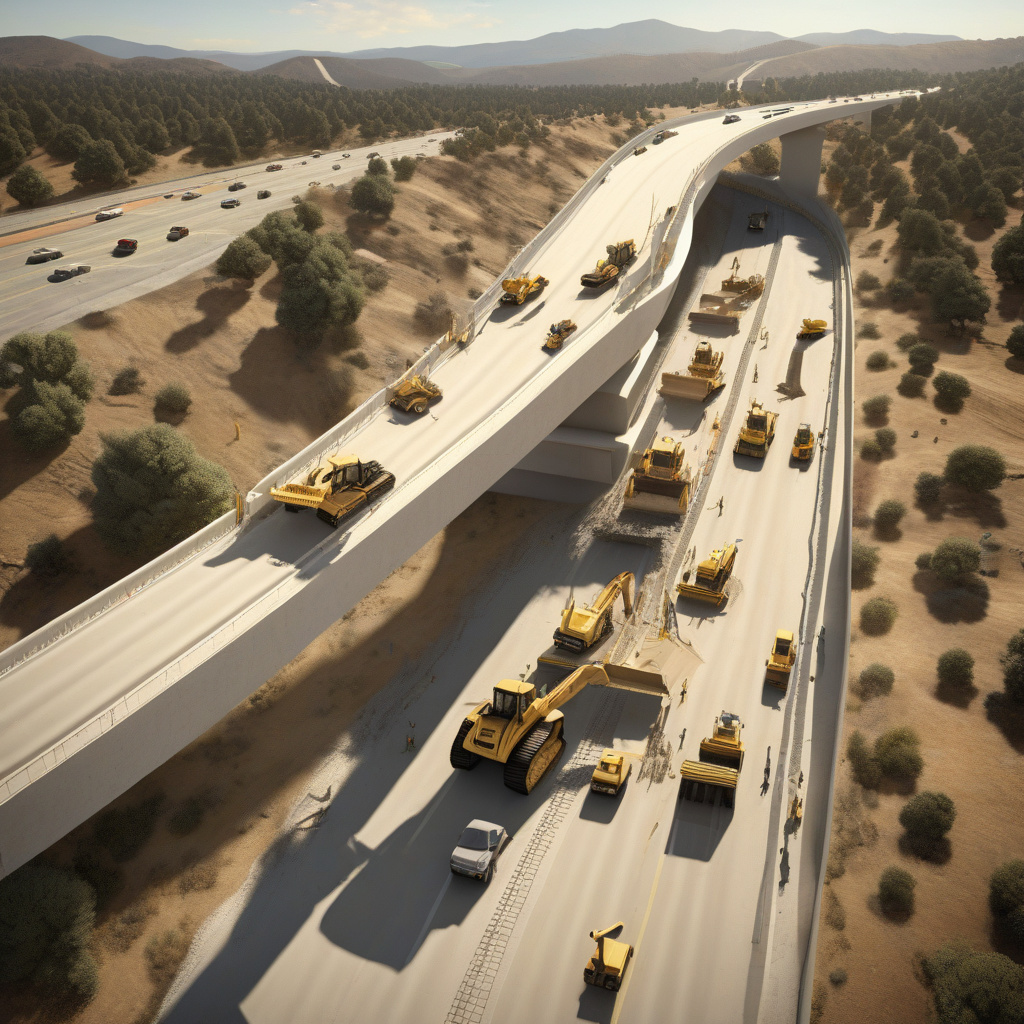US: World’s Largest Six-Lane Wildlife Crossing Takes Shape in California
On Wednesday, April 17, construction crews successfully installed the first girder of a vegetated wildlife overpass that will span six lanes of traffic in Agoura Hills, California. This ambitious project aims to provide a safe passage for wildlife, including mountain lions, bobcats, deer, and other animals, across the busy US 101 freeway. The wildlife crossing, which is set to be the largest of its kind in the world, is a testament to human innovation and environmental consciousness coming together to create a sustainable solution for cohabiting with wildlife.
The need for wildlife crossings has become increasingly apparent as urban development continues to encroach upon natural habitats, fragmenting ecosystems and posing a threat to wildlife populations. In California alone, dozens of mountain lions have been struck and killed by vehicles on highways in recent years, highlighting the urgency of implementing measures to protect these majestic creatures.
The six-lane wildlife crossing in California is a groundbreaking initiative that will not only save the lives of countless animals but also help to preserve genetic diversity among wildlife populations. By allowing animals to roam freely across their natural habitats without the danger of highways acting as barriers, the crossing will enable them to forage, mate, and thrive as they were meant to.
This project serves as a shining example of how infrastructure can be designed to accommodate the needs of both humans and wildlife. By incorporating vegetation into the overpass, the designers have created a naturalistic environment that will encourage animals to use the crossing regularly. This approach has been proven to be effective in other wildlife crossings around the world, where vegetation helps to mimic the animals’ natural habitats and increases their willingness to traverse the structure.
Moreover, the construction of the wildlife crossing is a testament to the power of collaboration between government agencies, environmental organizations, and private donors. The project received funding from a variety of sources, including the California Department of Transportation, the National Wildlife Federation, and the Santa Monica Mountains Fund. This multi-sectoral support underscores the widespread recognition of the importance of preserving biodiversity and protecting vulnerable species.
As the world’s largest six-lane wildlife crossing nears completion in California, anticipation is building among conservationists, biologists, and wildlife enthusiasts. Once open, the crossing is expected to significantly reduce the number of wildlife-vehicle collisions in the area, safeguarding both animal lives and human safety. It will also serve as a tangible symbol of our commitment to coexisting harmoniously with the natural world and finding innovative solutions to complex environmental challenges.
In conclusion, the construction of the world’s largest six-lane wildlife crossing in California represents a major milestone in wildlife conservation and infrastructure development. By prioritizing the safety and well-being of animals, we are not only protecting individual species but also preserving the delicate balance of entire ecosystems. As we look to the future, projects like this offer hope and inspiration for a world where humans and wildlife can thrive together in harmony.
wildlife crossing, California, US 101 freeway, biodiversity, conservation










